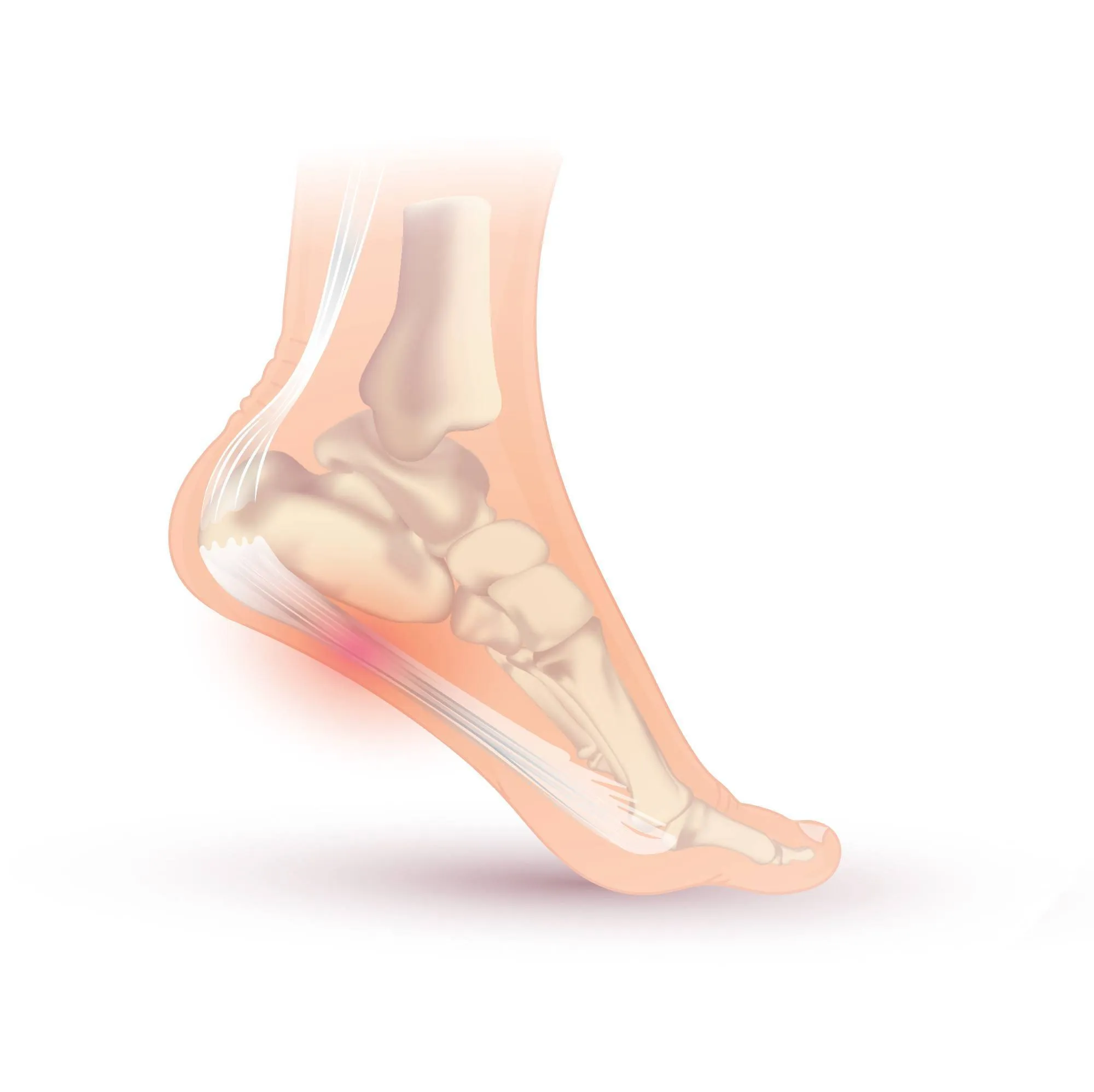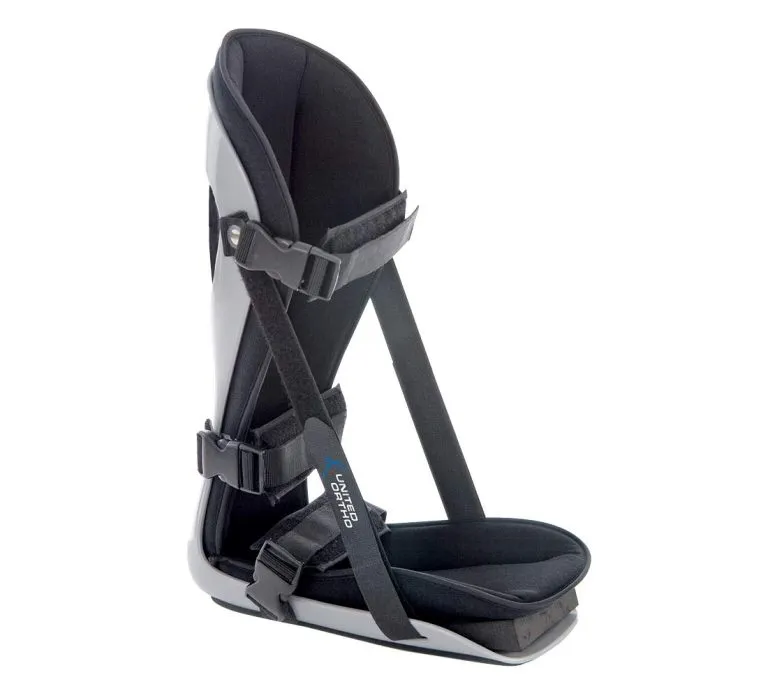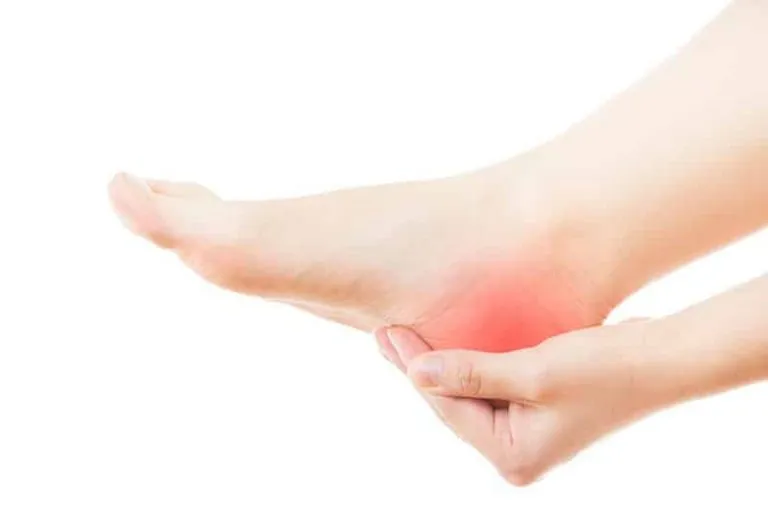Plantar Fasciitis Causes And Cures
If you’re one of the millions of Americans suffering from plantar fasciitis, you know the pain all too well. This debilitating condition can make it difficult to walk, let alone stand or run. But there is hope! In this blog, we’ll explore the causes and cures for plantar fasciitis, so you can get back on your feet and start living pain-free.
Plantar fasciitis – causes
Plantar fasciitis means inflammation of the plantar fascia, the connective tissue that supports the arch of your foot. The plantar fascia is a thick band of tissue that runs from your heel to the ball of your foot. It acts like a shock absorber and supports the arch of your foot.
There are several things that can lead to plantar fasciitis, including:
-Wearing shoes that don’t support your feet
-Standing or walking for long periods of time on hard surfaces
-Being overweight
-Having flat feet or high arches
-Having tight calf muscles
Plantar fasciitis – symptoms
Plantar fasciitis is a condition that can cause heel pain and discomfort in the foot. The plantar fascia is a band of tissue that runs across the bottom of the foot, from the heel to the ball of the foot. This tissue can become irritated and inflamed, causing plantar fasciitis.
Plantar fasciitis is a common condition, especially in people who are overweight or have jobs that require standing or walking for long periods of time. The condition can be painful and make it difficult to walk or even stand.
Symptoms
The most common symptom of plantar fasciitis is heel pain, which is often worse when you first get up in the morning or after you’ve been sitting for a while. The pain might lessen as you walk, but it will usually return after you’ve been standing or walking for a while.
Causes
There are several things that can contribute to plantar fasciitis, including:
-Being overweight
-Wearing shoes that don’t support your feet properly
-Standing or walking for long periods of time
-Having high arches or flat feet
-Having inflammatory arthritis such as rheumatoid arthritis or psoriatic arthritis
Plantar fasciitis – diagnosis
A GP or podiatrist (foot specialist) can usually diagnose plantar fasciitis by asking about your symptoms and examining your foot.
You will usually only need further tests if you have unusual symptoms, you’re aged over 40, or you have other risk factors.
These can include:
– being overweight
– having a job that involves standing for long periods or heavy lifting
– playing a lot of sport
Imaging tests
You might need an X-ray of your foot to rule out another cause of heel pain, such as a stress fracture. A stress fracture is usually found on the X-ray before it causes any pain. If there’s no clear cause on the X-ray, you might have an ultrasound scan of your foot. This uses sound waves to create an image of the tissues inside your foot.
Plantar fasciitis – treatment
There are a number of treatments that can be effective in managing plantar fasciitis. Many people find that a combination of treatments, including self-care measures, orthotics, shoes, and stretches, works best.
Self-care measures
There are a number of things you can do to help relieve the pain and discomfort of plantar fasciitis. These include:
· Rest: This is one of the most important things you can do to help your feet recover. Avoid activities that put stress on your feet, such as running or high-impact aerobics. If you must stand for long periods of time, take a break often and put your feet up when you can.
· Ice: Applying ice to the affected area for 10-15 minutes several times a day can help reduce swelling and pain. Do not apply ice directly to the skin – wrap it in a towel first.
· Anti-inflammatory medication: Over-the-counter medication such as ibuprofen or naproxen can help reduce pain and inflammation. Talk to your doctor before taking any medication, as there can be side effects.
Orthotics
Orthotics are special devices that support the foot and help relieve pain. They can be custom-made by your podiatrist or purchased over the counter at pharmacies or sporting goods stores. Look for orthotics that have good arch support and cushioning in the heel area. You may need to try different types before finding one that works best for you. Shoes with good arch support and cushioning in the heel area can help decrease the stress on your feet and provide relief from plantar fasciitis pain.
Look for shoes with the following features: · firm arch support · shock absorption in the heel area · soft, cushioned sole · wide toe box (enough room for your toes to move comfortably) Stretches Stretching exercises for the calf muscles, Achilles tendon, and plantar fascia (the connective tissue running along the bottom of your foot) can help lengthen these structures and provide relief from pain.
Plantar fasciitis – surgery
Plantar fasciitis is a condition that can cause heel pain. The plantar fascia is a band of tissue that runs across the bottom of your foot, from your heel to your toes. If this tissue becomes irritated or swollen, it can cause pain in your heel or arch. Surgery is usually only recommended if other treatments haven’t worked.
Plantar fasciitis – rehabilitation
Plantar fasciitis is a condition that can cause heel pain and difficulty walking. The plantar fascia is a band of tissue that runs along the bottom of the foot from the heel to the toes. The plantar fascia helps support the arch of the foot and acts as a shock absorber as we walk.
If the plantar fascia is overstretched or torn, it can become inflamed and cause heel pain. Plantar fasciitis is most commonly seen in middle-aged adults, but it can occur at any age. It is more common in women than men and in people who have close relatives with the condition.
There are several ways to treat plantar fasciitis. The most important thing you can do is to rest and avoid activities that make your heel pain worse. You should also ice your heel for 20 minutes several times a day to reduce inflammation.
Your doctor may also recommend stretching exercises, physical therapy, or orthotic devices such as arch supports or heel cups. If these conservative measures do not improve your symptoms, your doctor may recommend steroid injections or surgery.
Plantar fasciitis – prevention
There are a number of things you can do to prevent plantar fasciitis or alleviate the symptoms if you already have the condition. First and foremost, it is important to wear shoes that fit properly and support your feet. If you are a runner, buy running shoes that are designed for your foot type (e.g., pronation). It is also important to stretch your calf muscles and Achilles tendon before and after running or exercising. You can do this by doing some simple ankle and toe stretches.
If you are overweight, losing weight can help relieve the pressure on your feet and help prevent plantar fasciitis. Finally, if you stand for long periods of time, take a break every few minutes and walk around so that you are not putting all of your body weight on your feet.
Plantar fasciitis – FAQs
1. What is plantar fasciitis?
Plantar fasciitis is an inflammation of the connective tissue (the plantar fascia) that attaches the heel bone to the base of the toes. The plantar fascia is a tough fibrous band of tissue that helps support the arch of your foot and acts as a shock absorber with each step. Plantar fasciitis occurs when this connective tissue becomes damaged or tears. This can result in heel pain or stiffness, especially first thing in the morning or after prolonged periods of rest.
2. What are the symptoms of plantar fasciitis?
The most common symptom of plantar fasciitis is a dull, aching pain in the heel or arch of your foot that worsens with prolonged standing or walking. You may also experience stiffness or tenderness in your heel, particularly first thing in the morning after getting out of bed.
3. What are the risk factors for developing plantar fasciitis?
There are several factors that can increase your risk of developing plantar fasciitis, including:
–Age: Plantar fasciitis is more common among adults aged 40-60 years old.
–Weight: Carrying excess weight can put additional strain on your feet and increase your risk for plantar fasciitis.
–Footwear: Wearing shoes that are ill-fitting or lack support can contribute to the development of plantar fasciitis. High heels are particularly risky since they can shorten your Achilles tendon and reduce the range of motion in your feet.
–Activity: Individuals who participate in high-impact activities such as running or jumping are at increased risk for developing plantar fasciitis. Repetitive stress on your feet can also contribute to the development of this condition.
Plantar fasciitis – case studies
Plantar fasciitis is a condition that can cause heel pain. It is thought to be caused by strain on the plantar fascia, a band of tissue that runs from the heel to the ball of the foot and supports the arch. Plantar fasciitis can occur in anyone but is most common in middle-aged adults. It is seen more often in women than men.
There are a number of possible causes of plantar fasciitis, including:
-Weight gain: This extra weight puts more strain on the plantar fascia.
-Pregnancy: The added weight during pregnancy can also lead to plantar fasciitis.
-Foot problems: High arches or flat feet can put extra strain on the plantar fascia. This is especially true if you wear shoes that don’t support your feet properly.
-Aging: The plantar fascia becomes less elastic with age, which makes it more susceptible to injury.
-Other medical conditions: Diabetes, arthritis, and gout can all increase your risk of plantar fasciitis.
Plantar fasciitis – expert opinions
There is a lot of debate surrounding the best way to treat plantar fasciitis. Some experts believe that rest and ice are the best way to allow the inflammation to heal, while others believe that stretching and strengthening exercises are necessary to prevent the condition from recurring.
One common treatment method is to wear a night splint, which helps to stretch the plantar fascia while you sleep. Another popular treatment is to use orthotics, which are inserts that you can wear in your shoes to support your feet.
There is no one-size-fits-all solution for plantar fasciitis, so it’s important to talk to your doctor about what treatment options are best for you.







